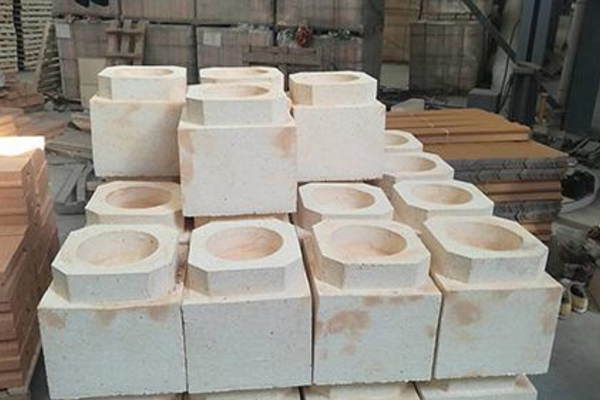
The different compositions of refractory bricks can be divided into five categories, namely: silicon-aluminum alloy alkaline series refractory bricks, Refrakter tuğlalar, karbon tuğlaları, zirconium refractory bricks, and heat insulation bricks.
The different compositions of refractory bricks can be divided into five categories, namely: silicon-aluminum alloy alkaline series refractory bricks, Refrakter tuğlalar, karbon tuğlaları, zirconium refractory bricks, and heat insulation bricks. Alumina refractory bricks are the first. Silicon bricks are the first acid-resistant refractory bricks.
For coke oven construction first, but for various glass, seramik, carbon furnace, refractory brick vaults and other bearing parts of the bearing furnace, hot air furnace temperature high parts of the use, but should not be less than 600 ℃ and temperature fluctuations of heat equipment.
Kil tuğlaları, it is a blast furnace, sıcak yüksek fırın, heating furnace, boiler, lime kiln, rotary kiln ceramic refractory bricks.
Yüksek alümina refrakter tuğlalar, high alumina refractory materials are composed of corundum, müllit, ve cam fazı. The raw materials are natural ores of bauxite and silicate, as well as fused alumina, sintered alumina, mullite composition, and clinker of alumina and clay calcination. It is produced by sintering. Fakat, the commodity is also available as fused bricks, molten bricks, tuğla, and amorphous bricks. Yüksek alümina refrakter tuğlalar, çelik endüstrisinde yaygın olarak kullanılmaktadır., demir dışı metal endüstrisi, ve diğer endüstriler.
Corundum refractory brick, which is a kind of refractory brick with corundum as the first object, can be divided into sintered corundum brick, and electrofused corundum brick.
With the continuous development of the cement industry, the requirements for refractory materials have also been put forward higher. Refractory bricks are popular because of their high-temperature resistance. Bu yüzden, how do friends know the quality of refractory bricks?
The refractory brick quality inspection method is usually hammer smash brick base, listening to their sound is determined, when a dull sound “, also confirmed the refractory material internal open space or level, this brick is not suitable for processing. When the sound is balanced. Confirmation of the internal structure of the brick is better. Suitable for processing; when the sound is very clear, close to the metallic sound. It is proven that the internal sintering of refractory bricks is high and the process is difficult. It has a high density, good detail, yüksek güç, and high thermal conductivity per unit volume component.
Refractory bricks have the following characteristics: kimyasal bileşim: the main components to determine the quality and performance of refractory materials; basınç dayanımı: the ability to accept the maximum pressure (room temperature); Termal şok direnci: the ability to resist temperature changes without being destroyed. Flexural strength: the ability to accept shear pressure. Yük yumuşatma sıcaklığı: also known as high-temperature load deformation temperature threshold, this parameter is very important to symbolize the high-temperature resistance of the material.
1. Thermal insulation performance
Refractory brick thermal conductivity is 1.0 (ortalama sıcaklık 350 ± 25 ℃) w / M.K Yukarıda, while the thermal conductivity of insulation brick is generally in 0.2-0.4 (ortalama sıcaklık 350 ± 25 ℃) w / M.K. This can be concluded that the insulation performance of the insulation brick than refractory brick insulation performance is much better.
2. Refrakterler
The refractories of refractory bricks are above 1400 derece, while the refractories of insulation bricks is mainly below 1400 derece.
3. Yoğunluk
The density of refractory bricks is basically above 2.0g/cm³, while insulation bricks are mostly light insulation materials, and density is generally 0.8-1.0g/cm³.
Kapsayıcı, refractory bricks have high mechanical strength, Uzun servis hayatı, iyi kimyasal stabilite, Malzeme ile kimyasal reaksiyon yok, ve iyi yüksek sıcaklık direnci, En yüksek ısıya dayanıklı sıcaklık ulaşabilir 1800 ℃. Özellikle yüksek ve düşük sıcaklık dönüşüm fırınlarında kullanım için uygundur, dönüşüm fırınları, hidrojenasyon dönüştürücüler, desülfürizasyon tankları, and methanation furnaces in fertilizer plants, and also in hot air furnaces and heating conversion equipment in the steel industry.
Refractory brick has the advantages of high density, yüksek güç, aşınma direnci, good corrosion resistance, small coefficient of thermal expansion, high grinding efficiency, low noise, Uzun servis hayatı, and non-staining materials. It is a high-quality grinding medium adapted to various grinding machines.
Insulation brick has heat preservation and insulation: effectively reducing energy consumption. Fireproof: reach the national standard A grade. Clean, environmental protection: will not cause secondary pollution of the air. Light weight: each square meter only weighs about 1.4 kilogram, reducing the load of the building. Simple production: completely break through the traditional process, and greatly shorten the construction cycle. Aesthetic: adjustable to various colors, suitable for open installation. Durable: Uzun servis hayatı. 7 major advantages.
Refrakter tuğla ve yalıtım tuğlası çok farklı, their use environment, kapsam, ve rol farklı. Farklı yerler farklı malzemeler kullanacak, Malzemelerin satın alınmasında, we have to decide which refractory material is suitable for their use according to their actual situation.
Ekim ayından bu yana, alümina fiyatları artmaya devam etti, and China's largest bauxite importer - a…
Birinci, Yüksek Alümina Tuğla: The Leader In High Temperature Refractories As a leader in high-temperature…
The application of refractory bricks in the kiln immediately endangers the operation rate of the…
Analysis Of The Causes Of Common Quality Problems In Tunnel Kiln Construction And Measures To…
Corundum quality refractory castables are made from corundum to the new jade refractory insulation material…
Alüminyum-Silikon Refrakter Hammadde Analizi Prof.. Li Yong of the University of Science and…